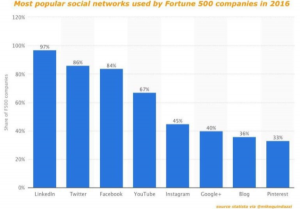The digital disruption in fin-tech and business technology, in general, is phenomenal. BizTech and FinTech innovations that support small businesses are being developed at a rapid pace. Yet, small businesses are still failing at an alarming rate. According to the Bureau of Statistics, there are over 2 million small businesses in Australia. However, starting and sustaining a small business is never as easy as it seems. In a first of its kind study of CEOs involved in companies that failed, the Australian Centre for Business Growth was able to determine why a high percentage of small businesses fail.
According to the study – which polled 650 CEOs, the top 5 reasons for failure were:
- lack of leadership and management skills, including poor planning
- insufficient market research and sales skills
- mismanagement of financials
- underestimating the impact of externalities, and
- poor governance structures
The High Cost of Poor Planning
Without a plan, you’re planning to fail. The reality, however, is that too many businesses start unplanned. As such, there isn’t much thought into the processes involved in building a successful small or medium enterprise.
Owing to the lack of forethought and planning – the latter amongst the top reason for failure – it leaves businesses open to missing out on critical opportunities.
As CEOs, you hold the power of success or failure. Your forethought and foresight will significantly impact the growth and profitability of your SME. Further, as the study highlighted, a CEO is responsible for leading the charge in managing and optimizing their company’s resources.
The Opportunity Cost of Failing to Act
Opportunity costs in decision making is a critical component of business success. But what are the benefits that SME CEOs are missing out on when evaluating investment alternatives?
What are the opportunity costs when they fail to take advantage of the multiple FinTech resources available at their fingertips?
Let’s look at a simple example that ties into the aspect of “underestimating the impact of externalities.”
Small businesses are often taken under by the failures of others. For instance, if a customer or supplier enters into liquidation, that’s outside the company’s control. However, the size of the contract and the business arrangements can determine whether the company sinks or floats.
Now, the question – how many small businesses are actually taking advantage of the resources available to them?
Take for example the implementation of the Personal Property Securities Register (PPSR). With this database, small businesses can take advantage of the opportunity to register their interest in an asset. If their customer goes into liquidation, their assets are protected from creditors. But only if they are registered.
Therefore, SMEs have been continually advised to protect their business interests and register. Frankly, there’s no opportunity cost lost – and everything to gain – in spending the time to register an interest.
Limiting Opportunity Cost with FinTech
When mismanagement of financials is a top-three reason for failure, it means you need to focus on the bottom-line. With the various advancements in FinTech, research and analysis are more accessible than before. Therefore, in analyzing core and non-core requirements, you also need to assess where the application of the resources available can help you.
FinTech innovation delivers information at one’s fingertips. It, like other resources, shouldn’t be ignored in business planning. After all, they are also a component of the financials for which mismanagement is a top cause of failure.
Again, another simple example at best – investing in equipment and transport for business. Most companies would want to go new. But that may not be the optimal use of their funds, especially in the early phases. They can instead choose pre-owned items and invest the difference in other business growth initiatives.
In keeping with our PPSR example above, they can use the PPSR to protect their interests and secure their investment. If they’re looking for equipment, check the Register to ensure it’s not encumbered and lose their investment. If they’re investing in a fleet of second-hand vehicles, then run a search to make an informed decision on their purchase.
Because that’s the key here – business planning and critical decision making. In analyzing the opportunity costs, a CEO can make educated decisions when they are weighing multiple options.
The Power of Looking Ahead
Are you making the decisions to ensure that your small business has a chance to not only survive but thrive in this economy?
Yes, the present is important. However, proper planning, leadership, and management are the keys to SME success. No one wants to be a statistic, a footnote in history as a failed enterprise. Instead, make use of the resources available. The business and financial tech innovations are there to support you in your goals.
Take advantage of the efficiencies these solutions can offer your business. Use the resources to make informed decisions that can prevent mismanagement and susceptibility to external problems. By doing so, you can be a part of the success stories that inspire a future generation of CEOs.
Business & Finance Articles on Business 2 Community
(17)




